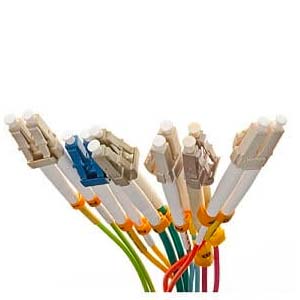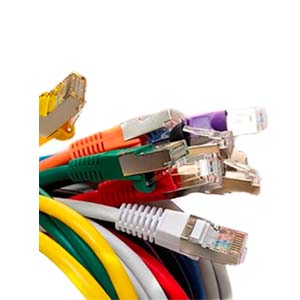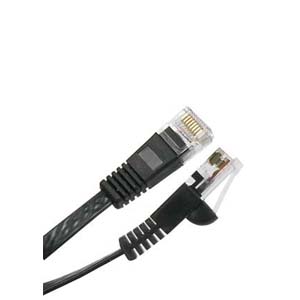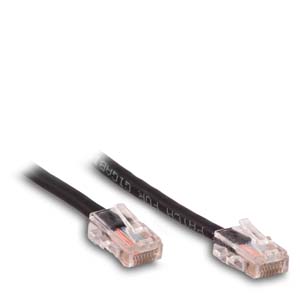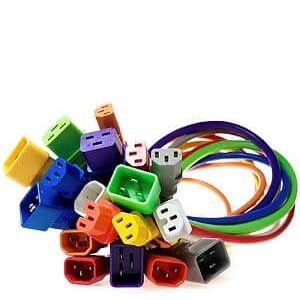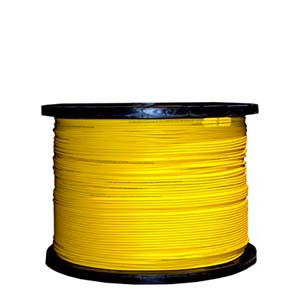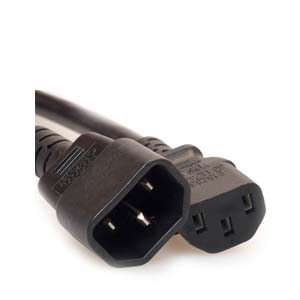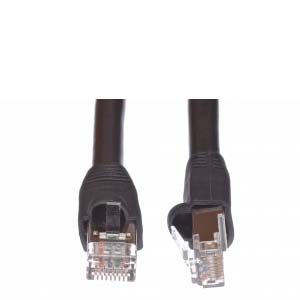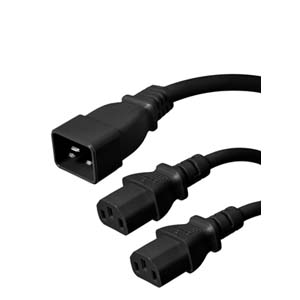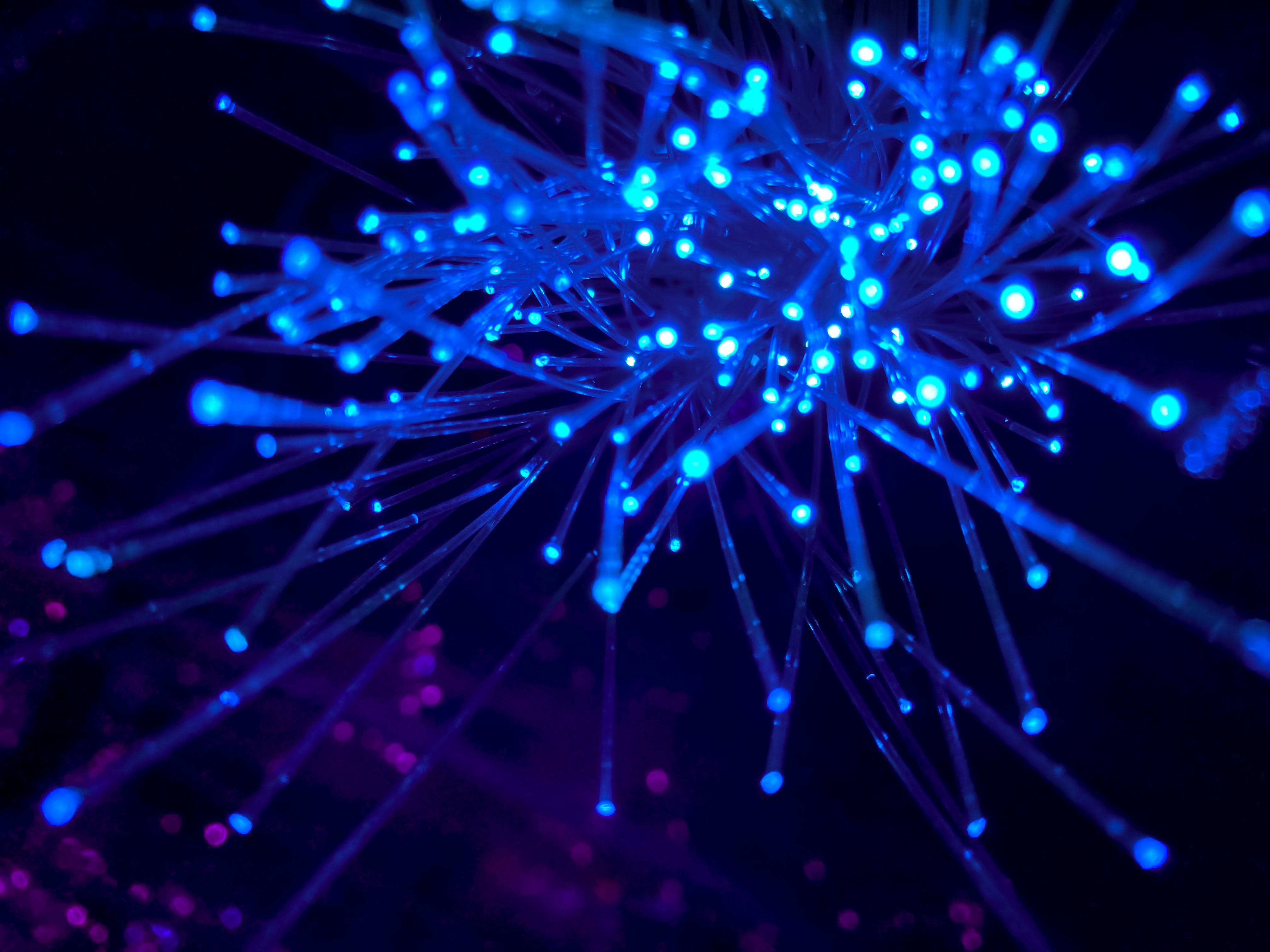Cables Blog
Types of Multimode Fiber Optic Cables
OM1, OM2, OM3, OM4 & OM5 Multimode Fiber Cables
The various types of multimode fiber optic cables include OM1, OM2, OM3, OM4, and OM5 multimode cables which all have their place in the industry today.
by Vikas Dayal • June 26, 2022
Multimode fiber optic cables all have cores made up of several strands of fiber material in order to be able to transmit more than one data signal at a time. If the first thing to learn about fiber optic cables is the difference between single mode and multimode fiber, a close second is the various types of multimode cables available. OM1, OM2, OM3, OM4, and as of 2016, OM5 multimode cables all have their place in the industry today. And while OM1 cables’ 62.5-micron core limits their direct compatibility with other types of multimode fiber cable, OM1 fiber remains just an important product for compatibility with older installations.
Multimode Fiber Optic Cable Types
With a few instances of overlap, you can quickly determine what type a multimode fiber optic cable is by the color of its jacket material. A slate-colored (gray) jacket indicates OM1, though sometimes OM1 cables will have an orange jacket instead. This can make it more difficult to distinguish between OM1 and OM2 cable which also has an orange jacket. Both OM3 and OM4 cables may have aqua jacket color, though only OM4s will ever have a violet (purple) color jacket. This means that while not all OM4 are violet, all violet wires are OM4. And OM5 wires will always have a green jacket color. Because of these instances of overlapping jacket colors, it’s important to check the printed information on or about the multimode cable to make sure you’re getting and using the type you need.
More important than color, of course, are the differences inside each of these multimode fiber optic cables, both structurally and in terms of performance. As mentioned earlier, OM1 multimode fiber wiring has a 62.5-micron fiber core which sets it apart from other types. Before discussing additional differences, let’s talk terminology:
Bandwidth as Megahertz over one Kilometer (MHz*KM)
When discussing fiber optic cable performance, bandwidth is often expressed as MHz*KM which translates to “megahertz over one kilometer.”
Converting MHz*KM to Mbps
While this measurement expresses how much data can be carried over a distance, it leaves out the variable of speed. Thus, converting to the more familiar expression of “megabits per second” (Mbps) is an imprecise science. One MHz-KM = between .7 and .8 Mbps
OM3, OM4 & OM5 Fiber Optic Cables
All multimode cables can transmit data from signals generated by transceivers using LED light source; however, OM3, OM4 and OM5 multimode cables (as well as some newer OM2 cables) can also transmit data signals generated by transceivers using laser light sources which can significantly increase bandwidth.
Check out the following two lists to see the differences in bandwidth from an LED transceiver versus a laser transceiver
Bandwidth from LED Source:
- OM1 Cables have a max bandwidth of 200 MHz*KM (between 140 and 160 Mbps)
- OM2 Cables have a max bandwidth of 500 MHz*KM (between 350 and 400 Mbps)
- OM3 Cables have a max bandwidth of 1,500 MHz*KM (between 1050 and 1200 Mbps)
- OM4 Cables have a max bandwidth of 3,500 MHz*KM (between 2450 and 2800 Mbps)
- OM5 Cables have a max bandwidth of 3,500 MHz*KM (between 2450 and 2800 Mbps)
Bandwidth from Laser Source:
- OM3 Cables have a max bandwidth of 2,000 MHz*KM (between 1400 and 1600 Mbps)
- OM4 Cables have a max bandwidth of 4,700 MHz*KM (between 3290 and 3,760 Mbps)
- OM5 Cables have a max bandwidth of 4,700 MHz*KM (between 3290 and 3,760 Mbps)
Studying these two lists, you’ll notice that the max bandwidth for both OM4 and OM5 multimode cables is the same. The distance limitations (which we’ll discuss next) are also identical which might lead you to ask, what benefit can an OM5 offer over an OM4 multimode cable? The answer has to do with shortwave division multiplexing (SWDM) or the ability to send multiple signals, in up to four wavelengths, through the same fiber. Very useful for high-traffic data centers, this technology only works over much shorter distances than an OM5 cable’s maximum distance capacity. OM5 cables were developed specifically for this use and are rarely chosen for any other application. The most popular multimode fiber cables for all other applications are OM3s and OM4s.
While the maximum length of the cable for optimum performances described above increases with OM3 and OM4 fiber optic cables, it decreases in all instances with the amount of data being transmitted. These distance limitations are expressed as Gigabyte Base Short Reach (or Short Range) which is abbreviated GBASE-SR. Except for OM1 cables, this can be expressed in units of 10 Gig, 40 Gig or 100 Gig. The corresponding notations are 10GBASE-SR Distance, 40GBASE-SR4 Distance and 100GB-SR10 Distance.
Maximum cable lengths for 10GBASE-SR Distances (Notably, OM1 and OM2 cables are limited to this magnitude.):
- OM1 Cables have a max length of 33 meters or 100 feet
- OM2 Cables have a max length of 82 meters or 160 feet
- OM3 Cables have a max length of 300 meters or 1,000 feet
- OM4 & OM5 Cables have a max length of 400 meters or 1,300 feet
For OM3, OM4 and OM5 cables, their max length decreases if they’re transmitting at the 40G-BASE-SR4 or 100GBASE-SR10 distances. At both these levels of transmission:
OM3 Cables have a max length of 100 meters or 330 feet
OM4 & OM5 Cables have a max length of 150 meters or 500 feet.
While it can feel like a lot to take in, all these specifications come into play when selecting which type of multimode fiber optic cable will best meet your needs at the most cost-effective price. OM3 cables and OM3 fiber patch cables are the most common type of fiber optic cable used in residential applications. And OM4 multimode cables are most popular for businesses other than extremely high-data-traffic industries. Which one is right for your next project? If you’re still not sure, our customer service department would be happy to help you find the answer.
Shop Multimode Fiber Optic Cables Now!


